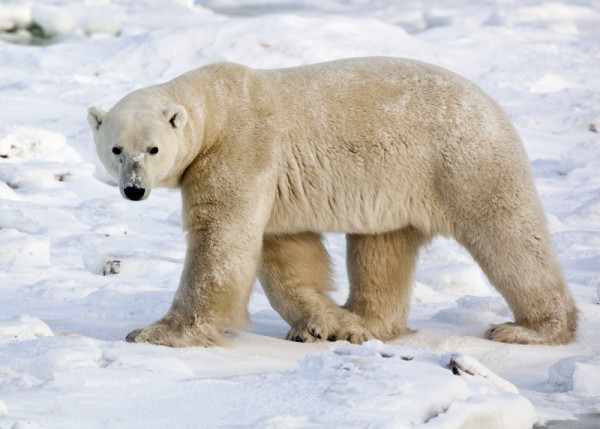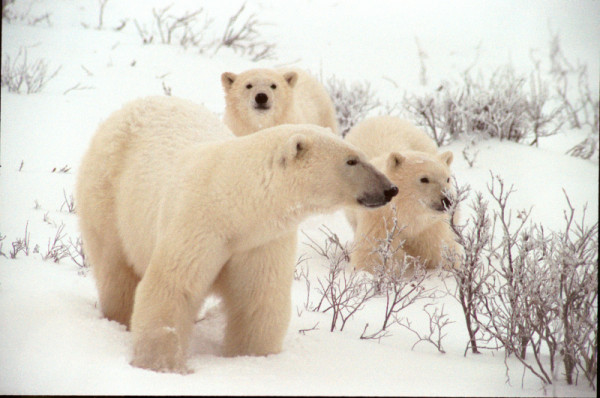Polar bears in a changing Arctic
In November, I took a trip south to see some polar bears.
While I live in the north, polar bears are not part of my day-to-day life. As a resident of Iqaluit, Nunavut’s capital and biggest settlement, I’m far more likely to see sled dogs and seals than bears. But, for many of my friends who live in other communities, polar bears are a regular part of their lives – and sometimes a very real threat.
© Gerald ALLAIN / WWF-Canada
With bears spending less time on the sea ice, many communities throughout Nunavut and across the Arctic are seeing more encounters with polar bears. While it was an incredible experience to see the bears from the safety of an enclosed vehicle outside Churchill, I wouldn’t like to find one in my back yard, or trying to break into my house. That’s the reality that many northern residents face.
In Churchill, Manitoba, conservation has put a gold standard polar bear-human conflict mitigation program in place. They’ve invested heavily for years to ensure that the people and bears of Churchill are safe. But few governments or organizations in the north can afford to do the same.
© Frank PARHIZGAR / WWF-Canada
That’s why WWF is exploring avenues to grow our own efforts to keep people and polar bears safe. Our pilot program in the hamlet of Arviat – established and run in partnership with the hamlet and the Government of Nunavut – has been a tremendous success, with zero defence kills (that is, polar bears killed for endangering life or livelihoods) for three years running. And it’s a success we’d like to replicate in other communities.
Steps to expand these efforts are already underway. Last fall, the Government of Nunavut ran a second polar bear monitor training course in Iqaluit, using a manual developed with WWF, Parks Canada and BearWISE the year before. It offers members of remote Arctic communities a chance to learn specific skills that can help keep their communities safe, and ensure that bears are not killed unnecessarily. While harvesting bears is an important tradition and economic opportunity for many Inuit, no one wants to see bears lost to accident, or exceed a quota unintentionally.
Programs like those of Churchill and Arviat are likely to become increasingly important in years to come, as sea ice becomes increasingly erratic. And WWF wants to ensure that we’re doing all we can to keep people and polar bears safe in a changing Arctic.



